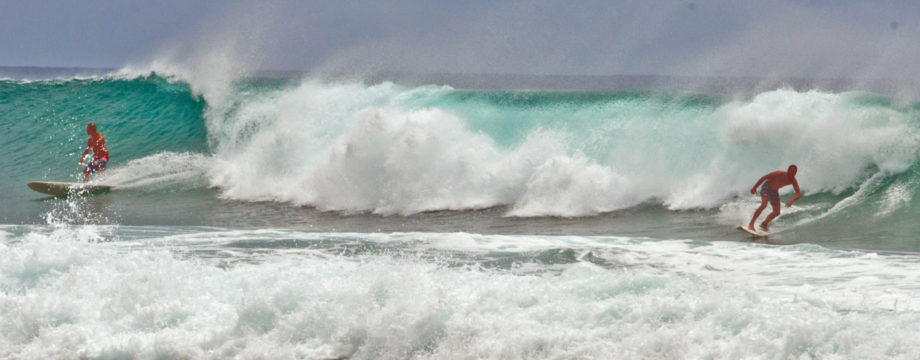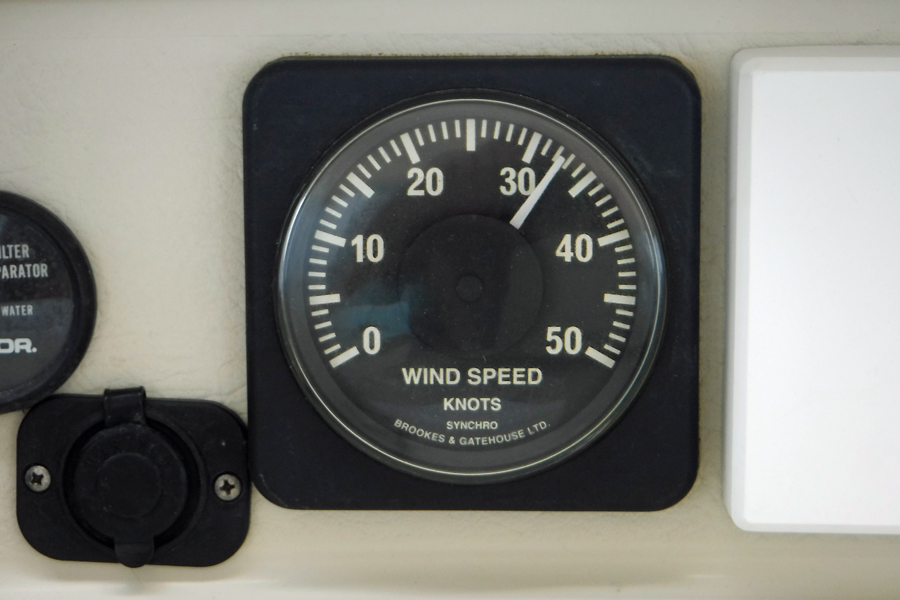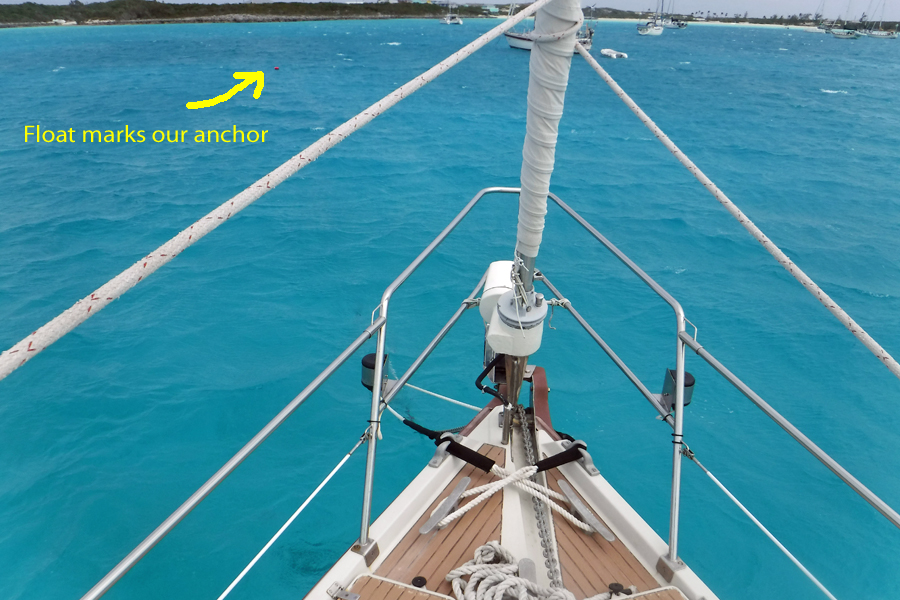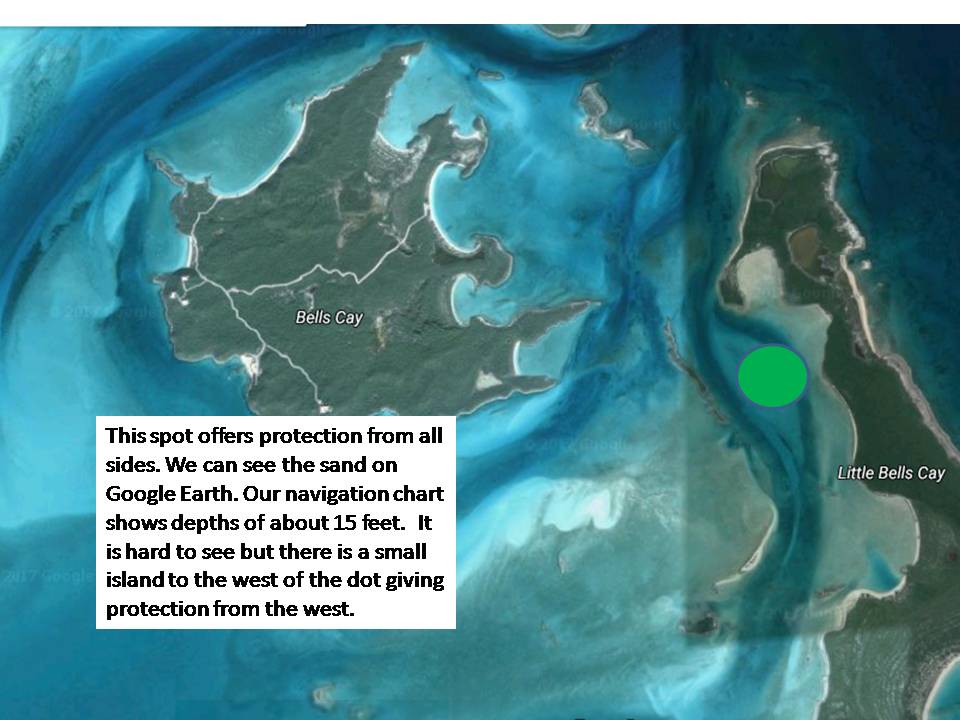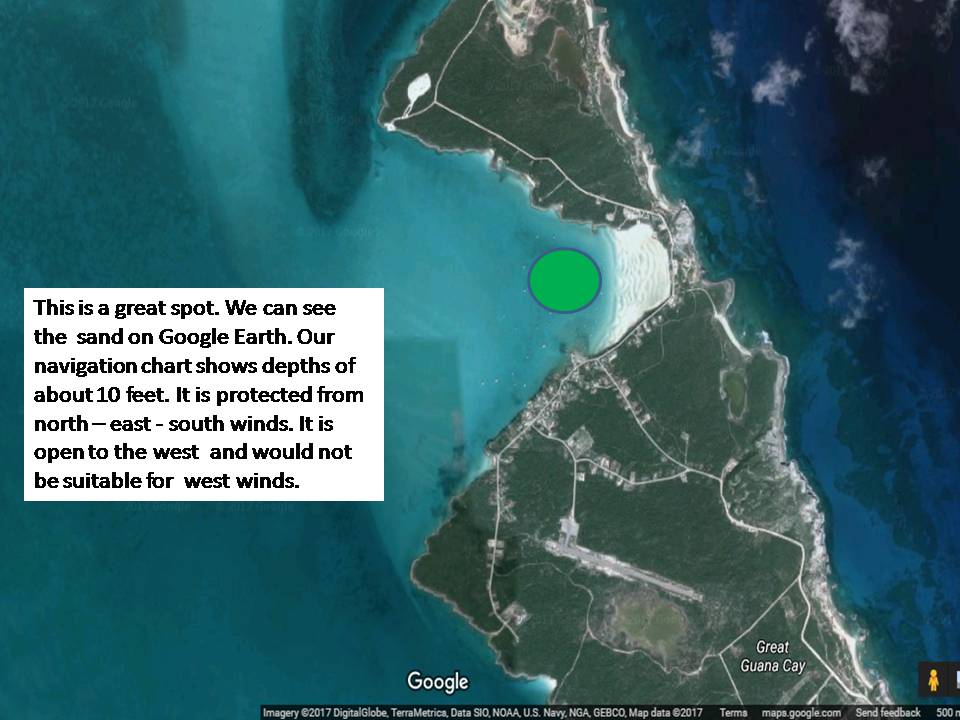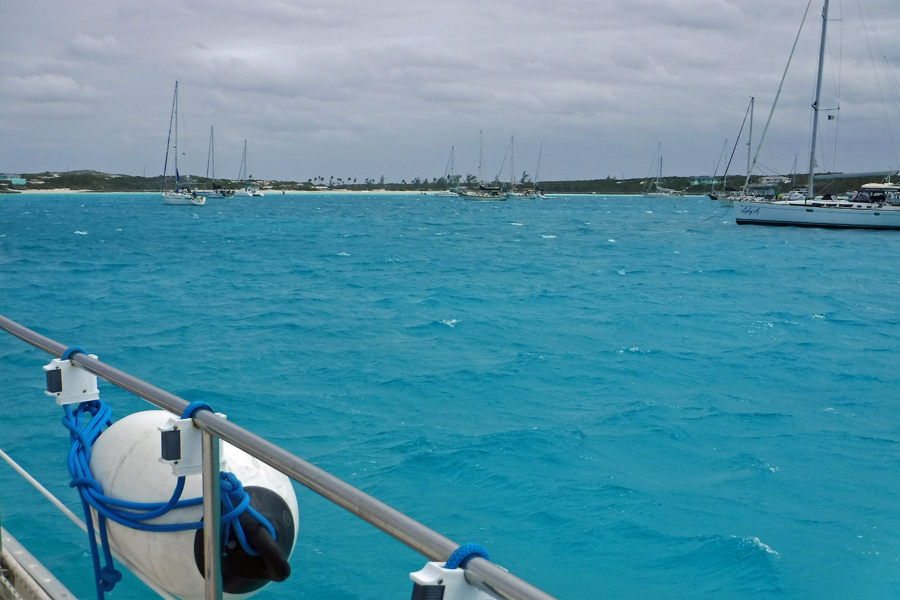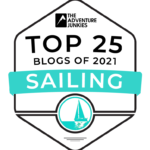The cruising life is not all grins and giggles. We are currently working our way southward down the Exuma Islands of the Bahamas. In previous posts, I have mentioned we have held for weather or moved to a safer area. We received a few questions about what this really means. I thought a couple of pictures would explain best. Since we are now hunkered down yet again, this post is timely.
Most of the islands here offer good shelter from east winds (winds coming from the east blowing toward the west). During the winter months, northern fronts push down and cause the winds to “clock”. This translates as: the wind becomes south, then west and then the wind blows like hell from the north or northeast. Eventually, the wind completes the circle and resume their normal easterly direction and strength. This whole cycle can take about 48 to 72 hours to complete. During this time, we try to find a spot where we have land between us and the direction of the wind. This is sometimes difficult as the winds are changing direction and we prefer not to move the boat multiple times. The land provides a calmer body of water (the leeward side) in which to sit when the winds blow hard. In addition, the area must have good holding for the anchor. Good holding is sand or soft mud allowing the anchor to dig in deep and not drag along the bottom when the weight of the boat enhanced by the strong wind pulls on the anchor. Weeds and rocks do not make good holding areas for anchors. We also lay out anchor chain. A normal amount of chain for us is about 7:1. (Every sailor has a preference on this ratio. Some swear by 5:1. Others will put out a minimum of 150 feet. Chapman Piloting and Seamanship says to use 5:1 minimum. We have found our boat likes 7:1 and will sit well at anchor). This is seven feet of chain for every one foot of depth from the top of our bow to the floor of the water. As the boat pulls on the anchor it will lift the chain. More chain length adds weight and prevents the lift keeping the anchor flat on the bottom. The more chain we can have laying flat on the bottom, the less strain is put onto the anchor. So on a regular day when we drop anchor in 15 feet of water, we add to that the height of the bow above the water (about 4 feet) and round it up to 20 feet. Multiply 20 by 7 and we know to let out about 140 feet of chain. Our chain is marked at 50 foot intervals to help us. Too much chain will cause the boat to dance about. Too much chain will also confuse other sailors wanting to anchor in the same bay as they will assume we are following similar guidelines with the amount of chain out. In a big blow like the one we are experiencing now, we increase the amount of chain. We are currently at a 10:1 ratio. Because we did this and were one of the first vessels in the anchorage, we marked our anchor with a red float to warn off other sailors from anchoring too close.
We have had sustained winds of over 30 knots yesterday. Today the wind increased to about 35 knots (almost 40 MPH). We expect the same conditions tonight and perhaps a little higher. Our navigation system has an anchor alarm. If the boat should pull up and drag the anchor the GPS will sense the boat has moved beyond our safety circle and a very loud alarm sounds. It has only ever sounded once and it turned out to be a false read on the GPS. We no longer use that GPS unit.
One of the challenges about the Exuma Islands is there are limited spots providing protection from these winds. Once the forecast looks imminent, the bays can fill up quickly. We are fortunate to not have a schedule. On the first indication of bad weather we start to look for a safe anchorage. If we get there and the weather passes without incident, then it is no big deal. We just enjoy the stop. If the weather does hit, then we are one of the first to be in a good spot with the best holding for the anchor.
Are we rocking and rolling? A little bit. Once the boat starts to pull on the anchor chain, it will stay pointed into the wind. When the boat is pointing into the wind the conditions inside are quite comfortable as the waves do not roll the boat, too much.
Cindy has a good book going and we just enjoyed a great breakfast. We will wait here for the next couple of days. When the winds are back to normal we will resume our trek south. This is one of the perks to still being near land. If we were out at sea, we would be forced to ride out the weather without the comforts of a safe harbor. For now, we will make the most of doing nothing for a couple of days.
